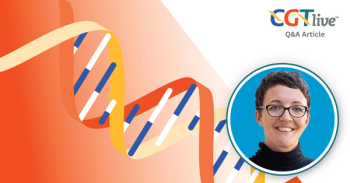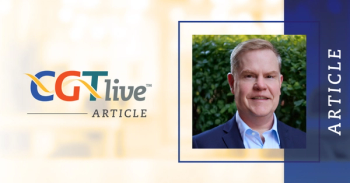
Lentiviral Gene Therapy for Infants With X-Linked SCID Helps Build ‘Functional’ Immune System
The interim study results presented at ASGCT 2022 likely represent the longest follow-up data to date for the largest cohort of infants with XSCID treated with lentiviral vector gene therapy.
Gene therapy has been explored in the past for X-linked severe combined immunodeficiency (XSCID), a rare inherited disorder resulting in a mutation of the IL2RG gene that encodes a protein that is vital to the development of immune cells, specifically T and natural killer (NK) cells. However, early gene therapy trials successfully restored only the T cells and led to some patients developing iatrogenic leukemia. The traditional treatment option of bone marrow transplant is limited to patients who have a matched donor sibling.
Now, investigators are evaluating a new approach that relies on a lentiviral (LV) vector along with reduced exposure busulfan in newly diagnosed infants with XSCID. Interim results, which include median follow-up of 2.4 years, from the ongoing phase 1/2 trial (NCT01512888) were presented at the
The goal of the study is to assess whether the new method of transferring a normal copy of the common γ-chain gene into the participant's bone marrow stem cells is safe and results in the patient developing a normal immune system.
Primary outcome measures include the number of patients with adequate neutrophil count recovery after busulfan conditioning, number of patients experiencing no directly related grade 4 or greater adverse event (AE), reconstitution with transduced cells defined as detection of vector-marked peripheral blood cells by real time PCR at or above 0.02% VCN [vector copy number ] in total white blood cell count, and number of patients with treatment failure. Other outcomes include number of NK cells, vector copy number by location of vector-integration sites in sorted blood cells,and overall survival, among others.
At ASGCT, investigators reported what they believe to be the longest follow-up data (median, 2.4 years, range: 1.4 months–5.4 years) on the largest cohort of infants with XSCID treated with LV gene therapy. A total of 23 infants with XSCID received the treatment, at a median age of 3 months (range: 2.4–13.8). All patients received busulfan targeted to a cumulative area-under-the-curve (cAUC) of 22 mg*hr/L prior to receiving the infusion of transduced autologous bone marrow CD34+ cells (median vector copy number of 0.81/cell [range: 0.16-1.81], and median CD34+ cell dose of 9.61x106/kg [range 4.4- 18.95]).
According to investigators, all patients are alive and all 20 patients with a follow-up > 4 months have “recovered from pre-existing infections, are off protective isolation and prophylactic antimicrobials, and have normal growth velocity.”
Follow-up data > 6 months was available for 18 patients. Of the 18, 17 exhibited robust immune reconstitution (median CD3+ 2,545/uL [range: 922-4,321], CD4+ 1568/uL [range: 436-3,556], CD4+/CCR7+/CD45RO-/ 1416/uL [range: 298-3,307]). All patients experienced substantial multilineage engraftment that sustained over time, according to VCN analysis in T, B, NK, and myeloid cells separated from peripheral blood.
“In these 17 patients, T cells matured appropriately as assessed by normal T cell receptor excision circles and TCRvβ repertoire diversity and were functional as judged by phytohemagglutinin activation,” investigators reported. “Immunoglobulin replacement has been discontinued in 15 patients, and 12 have been immunized, with 2 more begun immunizations.”
Encouraged by these interim results, investigators hope to further explore LV gene therapy as an alternative treatment modality for infants with XSCID.
“LV gene therapy for XSCID using low dose busulfan conditioning has been well tolerated and results in the development of a durable, functional immune system without evidence of malignant transformation,” the research team concluded. “Thus, our approach presents a promising alternative to current treatment modalities.”
Reference:
Mamcarz E, Zhou S, Lockey T, et al. Lentiviralgene therapy with low dose busulfan for infants with x-linked severe combined immune deficiency (xscid) results in the development of a normal and sustained immune system: interim results of an ongoing phase I/II clinical study. Presented at: American Society of Gene & Cell Therapy 25th Annual Meeting; May 16-19, 2022; Washington, DC. Accessed May 11, 2022. https://annualmeeting.asgct.org/abstracts/abstract-details?abstractId=3785
Newsletter
Stay at the forefront of cutting-edge science with CGT—your direct line to expert insights, breakthrough data, and real-time coverage of the latest advancements in cell and gene therapy.































